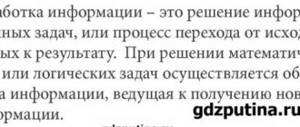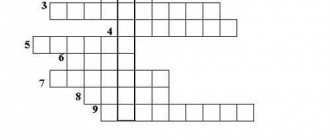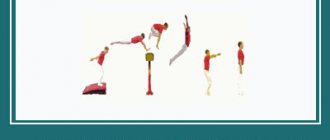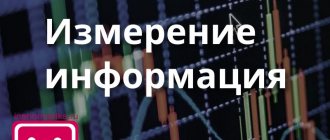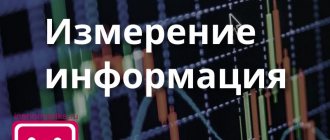Flash memory
Flash memory is an integrated circuit that does not require constant power to store data. In other words, it is non-volatile semiconductor computer memory. Storage devices with flash memory are gradually conquering the market, displacing magnetic media.
Advantages of Flash technology:
- compactness and mobility;
- large volume;
- high speed;
- low power consumption.
Flash-type storage devices include:
- USB flash drives. This is the simplest and cheapest storage medium. Used for repeated recording, storage and transmission of data. Sizes range from 2 GB to 1 TB. Contains a memory chip in a plastic or aluminum case with a USB connector.
- Memory cards. Designed for storing data on phones, tablets, digital cameras and other electronic devices. They differ in size, compatibility and volume.
- SSD. Solid state drive with non-volatile memory. This is an alternative to a standard hard drive. But unlike hard drives, SSDs do not have a moving magnetic head. Due to this, they provide quick access to data and do not make squeaks like HDDs. The disadvantage is the high price.
Lesson summary on the topic: “Information media.”
The topic of the lesson is “Information media”.
Lesson objectives:
Educational:
introduce students to the history of improving storage media and show the role of storage media in human life;
Developmental:
to develop the curiosity and research qualities of the child, to form an information culture, cognitive interest, creative activity, students, the ability to express thoughts, and simulate a situation.
Educational:
Develop respect for comrades, the ability to compete with dignity, and the ability to work in a team.
Pedagogical objectives of the lesson:
- reveal the meaning of the concept and expand students’ understanding of information carriers;
- show the use of storage media and give them brief characteristics;
- teach to use the concept of “information carrier” when answering questions.
Requirements for the level of mastery of educational material after completion of the lesson:
- be able to give examples of various media, including technical ones;
- be able to distinguish and name types of storage media;
- understand why storage media are needed.
Key concepts: information carrier, source of information.
Auxiliary (additional) concepts: traces, paper, birch bark, parchment, laser disk, magnetic disk.
General characteristics of the lesson:
- the recommended form of organization is a heuristic conversation based on the empirical knowledge and experience of students, frontal work (solving information problems in a workbook);
- The recommended type of lesson is combined (repetition and generalization, explanation of new material, knowledge control and practical work);
- strategy - developing, proactive. Lesson materials: textbook, workbook No. 1, demonstration PC (a multimedia projector is required).
Lesson Plan
- Organizational moment (1-2 min).
- Survey on the topics “Information. Sources and receivers of information” (5-7 min).
- Summarizing information on the topic of the lesson (7-9 min).
- Physical education session (2-3 min).
- Completing tasks in the workbook (5-7 min).
- Computer workshop (5-10 min).
- Summarizing and summing up (3 min).
- Teacher's comments on homework (2-3 min).
During the classes
After the motivational stage, survey students. Questions for discussion:
- What types of information does a person use to put a message on paper?
- In what ways do animals and birds transmit information?
- What types of information does a computer not process (“understand”)?
- In what ways does a person communicate with a computer?
- What types of information are used in a computer to convey a message?
Presentation of new material:
A storage medium can be anything on which information can be recorded and stored for a long time. The storage medium with the data recorded on it can be transferred to other people so that they can read and understand the meaning of the message.
Traditional media that people have used since ancient times are paper, parchment, papyrus, etc. Technical media differ from traditional media in that the data stored on them - text, drawing, speech, music - can only be read or reproduced using technical devices , such as a computer, tape recorder, player. Technical media include magnetic tape, floppy disk, hard magnetic disk (magnetic storage media), compact disc (optical storage media).
Data on technical storage media! are stored for a very long time. In addition, they contain more information than paper media.
Solving information problems
Exercise 1.
The goal here is to update existing knowledge about information carriers.
In the first case (a), you need to indicate the information carriers with arrows. In this case, students need to select from among those proposed those objects that can serve as information carriers. Stone, papyrus, wood, and paper can be used as such media. The remaining objects (air, snow, water), although they can carry information about something for a certain period of time, are not used by humans as information carriers.
In the second case (b), you need to connect the source of information and the storage medium with an arrow. For analysis, an image of a stone with some symbolic inscription and an ordinary stone are offered. Children are asked to reason to justify their answer: both stones are perceived by the human senses and therefore both of them are sources of visual, tactile, olfactory, gustatory, and auditory information. But at the same time, the source of symbolic information is only a stone on which a person has drawn lines and assigned them a certain meaning and significance. The other stone is not a source of sign information, since there are no signs on it.
In exercise 2
It is required to indicate with arrows ancient and modern media.
The goal of the final exercise is to consolidate knowledge about the history of the use of storage media. ( Modern disk.) In exercise
Students are asked to identify the media by its description.
In exercise 4
children must choose modern media from among those offered, placing a check mark on them.”
is similar in meaning ,
where the correct answer should be underlined.
When doing exercise 5
children must indicate the general purpose of all media - to store information.
In exercise 6
Key words are: “subject”, “specially”, “records”.
In the exercise
7 Students must choose the correct definition of the information carrier: it is a stone on which there are signs.
Computer workshop
EER: lesson 3 - tasks 4-7.
Summarizing and summing up
When summarizing the results, the teacher informs students of the grades and draws attention to the following important aspects:
• information carrier is any material object on which information can be recorded;
• storage media are needed to store and transmit information;
• distinguish between technical and paper media;
- special equipment is required to read information from technical media;
- technical media are durable (provide long-term storage of information) and compact (you can record more information than on paper);
- The computer uses floppy disks, hard disks, laser disks, and flash memory.
Homework
- Read the textbook test - § 4 “Information media”.
- Answer the questions at the end of the paragraph. .
- Complete the tasks in workbook No. 1.
INFORMATION CARRIERS Computer science lesson in 3rd grade on the topic: - presentation
INFORMATION CARRIERS Computer science lesson in 3rd grade on the topic:
INFORMATION CARRIERS are any material objects on which information is stored
§ 3. INFORMATION MEDIA Storage and transmission of information are always associated with information media. In ancient times, people used stone, clay tablets, papyrus, birch bark, and parchment for this purpose. Nowadays, such information carriers can only be seen in museums. Later, people created many other storage media. For example, paper. This is the most common storage medium. Books are now made from paper. Everything on which traces are left, on which a person has either drawn or written something, is a storage medium. For example, the information carrier is fabric with a picture or inscription. ! The storage and transmission of information is always associated with a material information carrier.
The carrier of information is air if an airplane flying in the sky leaves a trace in it. The information carrier can be snow. In snow, information is retained until the snow melts or until new snow falls. From the tracks in the fresh snow you can easily determine who was here: a person, a dog or a bird.
! An information carrier can be called something that contains intentionally or accidentally left traces or records for the purpose of storing or transmitting information. You can find a person by the footprints he left in the sand, snow or earth. A dog can find a person if he has passed, but has not left visible traces. Traces visible and invisible to humans carry information about those to whom they belong, that is, about those who left them. ! The traces left behind carry information for the one who perceives them (sees, hears, etc.). Signs or traces left on snow, sand, water or in the air are short-lived and quickly disappear (washed off, scattered, etc.). Therefore, snow, sand, water or air are short-lived storage media, unlike, for example, paper.
Natural media of information Try to explain what information can be obtained from such a source...
Consider for yourself a few examples of storage media used in ancient times...
Drawing by a primitive artist, Spain Scenes of the life of a pharaoh, ancient Egyptian wall painting Rock and wall painting
Mesopotamian cuneiform, Ancient Sumer, 1800s. BC. Clay tablets
Papyrus scrolls. Ancient Egypt, XXI-XVIII centuries. BC. Papyri
Birch bark document, Veliky Novgorod, XI-XIII centuries. Birch bark letters
Works of art Nativity Cathedral, Suzdal, XIII century. Vessel with a dragon, China, XVII-XVIII centuries. Madonna and Child, Leonardo da Vinci, 1478 Discus thrower, Greece, V-IV centuries. BC. 12
The traditional carrier of information that people have used since ancient times is paper.
Making paper by hand Paper China, 2nd century. Machines for making paper: the beginning of the 20th century. and our days
The book has come a long way in its history: from handwritten to printed and electronic books.
! Using special devices, you can leave special “traces” on a storage medium such as magnetic tape or a magnetic or laser disk. ! Magnetic and laser disks, magnetic tapes are modern storage media. Modern storage media have one drawback: without a special tape recorder or computer, it is impossible to read information from a tape or disk. But on a modern storage medium you can store as much information as is stored in an entire book library.
Gramophone record Audio cassettes Compact discs Audio storage media
Video cassettes DVDs Films Video storage media
Let's discuss 1.What can serve as a storage medium? 2. What are storage media needed for? 3. What ancient media do you know? 4. Why did different peoples use different media? 5. Why have storage media changed over time? 6. What modern storage media can you name? 7. What storage media do you use most often?

